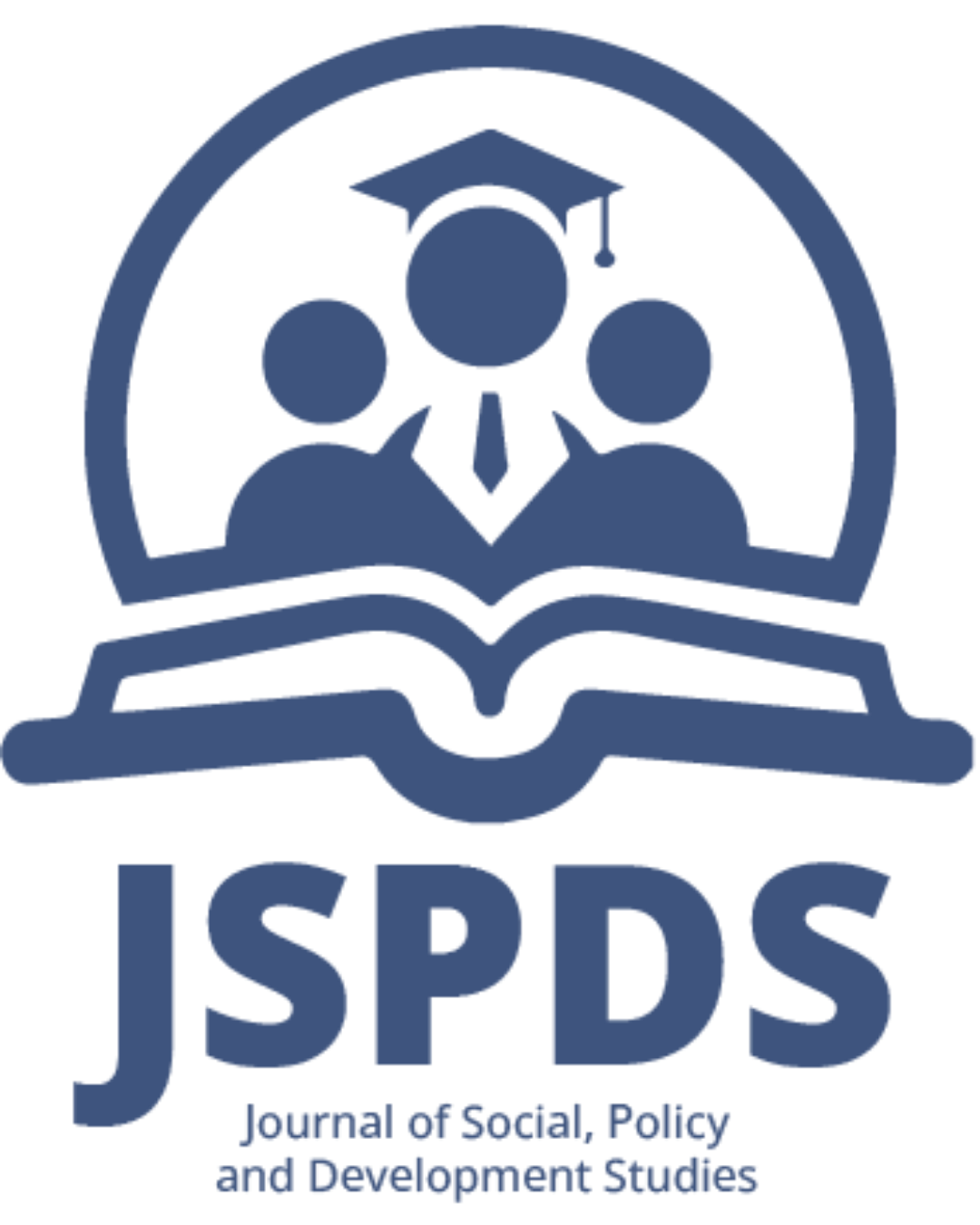Digital Inequality: E-Commerce Access and Its Implications for Underdeveloped Regions in Indonesia
DOI:
https://doi.org/10.65119/jspds.v2i1.20Keywords:
Digital Divide , E-Commerce Accessibility , Regional Inequality, Digital Infrastructure, Inclusive Economic DevelopmentAbstract
Indonesia is undergoing a significant digital transformation, but the disparity between developed and underdeveloped regions remains evident in internet access, infrastructure, and digital economic integration. This study investigates how gaps in digital infrastructure—specifically internet density, logistics facilities, and internet speed—affect the number of online MSMEs, e-commerce GDP contribution, and poverty rate across four provinces: Jakarta, West Java, East Nusa Tenggara, and Papua. Using a quantitative approach with SPSS analysis, strong correlations were found. Internet density has a highly significant positive correlation with online MSMEs (r = 0.994, p = 0.006). Logistic warehouses strongly predict e-commerce GDP contribution (R² = 0.991, F = 214.27, p = 0.005), and internet speed has a significant negative impact on poverty (β = -1.228, p = 0.021). A composite digital inequality index also highlights substantial gaps between the developed and underdeveloped regions, confirming hypothesis H₄. These findings validate that digital infrastructure directly influences economic outcomes, particularly in marginalized regions. The study concludes that bridging the digital divide is essential for inclusive development. Policymakers should prioritize investment in digital infrastructure as a strategic tool for reducing poverty and stimulating regional economic growth.
References
Ariansyah, K., Barsei, A. N., Syahr, Z. H. A., Sipahutar, N. Y. P., Damanik, M. P., Perdananugraha, G. M., ... & Suryanegara, M. (2023). Unleashing the potential of mobile broadband: Evidence from Indonesia's underdeveloped regions on its role in reducing income inequality. Telematics and Informatics, 82, 102012.
Ariansyah, K., Sirait, E. R. E., Nugroho, B. A., & Suryanegara, M. (2021). Drivers of and barriers to e-commerce adoption in Indonesia: Individuals’ perspectives and the implications. Telecommunications Policy, 45(8), 102219.
Badan Pusat Statistik. (2023). Statistik E-Commerce Indonesia 2023. https://www.bps.go.id
Creswell, J. W. (2014). Research Design: Qualitative, Quantitative, and Mixed Methods Approaches (4th ed.). Sage Publications.
Digital Transformation: A Strategy to Leave No One Behind. New York: UNDP.
Faizah, C., Yamada, K., & Pratomo, D. S. (2021). Information and communication technology, inequality change and regional development in Indonesia. Journal of Socioeconomics and Development, 4(2), 224-235.
Jurriens, E., & Tapsell, R. (2017). Challenges and opportunities of the digital ‘revolution’in Indonesia. Digital Indonesia: Connectivity and Divergence, 2020, 275-288.
Kartiasih, F., Djalal Nachrowi, N., Wisana, I. D. G. K., & Handayani, D. (2023). Inequalities of Indonesia’s regional digital development and its association with socioeconomic characteristics: a spatial and multivariate analysis. Information Technology for Development, 29(2-3), 299-328.
Kementerian Komunikasi dan Informatika. (2023). Indeks Pembangunan TIK Indonesia Tahun 2023. https://kominfo.go.id
Kustanto, A. (2024). Bridging the Digital Gap: Analysing the Impact of ICT Diffusion on Income Inequality in Indonesia. Икономическа мисъл, (3), 323-352.
Kustanto, A. (2024). Can ICT Diffusion Reduce Income Inequality for a Better Life? Evidence from Indonesian Provinces. Asian Journal of Applied Economics, 31(1), 1-36.
Pick, J. B., & Sarkar, A. (2016). The Global Digital Divides: Explaining Change. Springer.
Retrieved from https://www.undp.org/publications/digital-strategy-2022
Santoso, S. (2019). Mengolah Data Statistik dengan SPSS 26. Jakarta: Elex Media Komputindo.
Sugiyono. (2017). Metode Penelitian Kuantitatif, Kualitatif, dan R&D. Bandung: Alfabeta.
UNDP (United Nations Development Programme). (2022).
van Dijk, J. (2005). The Deepening Divide: Inequality in the Information Society. SAGE Publications.
Velicia, G. (2025). The Influence of the Role of the Digital Economy in Advancing Economic Growth in Indonesia. EBFAM Journal, 1(1), 29-36.
World Bank Indonesia. (2023). Digital Economy in Indonesia: Enabling Reforms. https://www.worldbank.org/en/country/indonesia/publication/digital-economy-indonesia
World Bank. (2021). Digital Indonesia: Connectivity and Inclusion. World Bank Group.
Downloads
Published
Issue
Section
License
Copyright (c) 2025 Journal of Social, Policy and Development Studies

This work is licensed under a Creative Commons Attribution-ShareAlike 4.0 International License.









